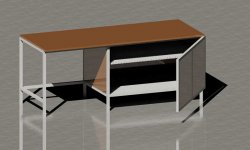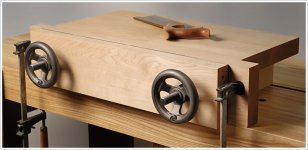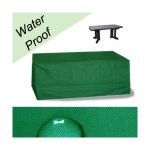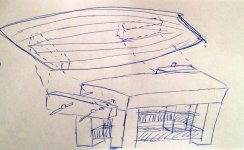As many already know, I don't have the luxury of a workshop so I've been toying with ideas of how to approach my want to have some vices available for hand tool use in the back yard.
One option that I have given a hard look at is the Milkman's Workbench with more modern Benchcrafted or Veritas vices substituted in it. I would mount this to my MFT/3 table if I end up building this and it could probably fit into our garden shed (unheated, but has four walls & a roof) for storage between uses. Not sure if even this would work around the year due to wood movement.
Another option I've considered would to build a proper Split-top Roubo work bench with guidance from the Woodwhisperer guild build to permanently stand on our backyard's deck under the balcony. I have a roof on the first third of the deck (3m deep) where I would have to put a big bench like this so direct rain is not going to hit it normally unless its raining sideways, but would be totally exposed to direct sunlight, wind, snow, freezing temperatures & extreme dryness in the winter, high humidity spring/fall and heat & medium humidity during summers.
Now question I'm asking is is it possible to build something like this with moving parts like the vices in wood to stand outside around the year and still actually work with the natural movement of wood involved? Also would any species of wood realistically last out there without rotting or disintegrating from the weather? (Reasonably priced wood at that considering the quantities involved in a massive workbench)
One option that I have given a hard look at is the Milkman's Workbench with more modern Benchcrafted or Veritas vices substituted in it. I would mount this to my MFT/3 table if I end up building this and it could probably fit into our garden shed (unheated, but has four walls & a roof) for storage between uses. Not sure if even this would work around the year due to wood movement.
Another option I've considered would to build a proper Split-top Roubo work bench with guidance from the Woodwhisperer guild build to permanently stand on our backyard's deck under the balcony. I have a roof on the first third of the deck (3m deep) where I would have to put a big bench like this so direct rain is not going to hit it normally unless its raining sideways, but would be totally exposed to direct sunlight, wind, snow, freezing temperatures & extreme dryness in the winter, high humidity spring/fall and heat & medium humidity during summers.
Now question I'm asking is is it possible to build something like this with moving parts like the vices in wood to stand outside around the year and still actually work with the natural movement of wood involved? Also would any species of wood realistically last out there without rotting or disintegrating from the weather? (Reasonably priced wood at that considering the quantities involved in a massive workbench)




